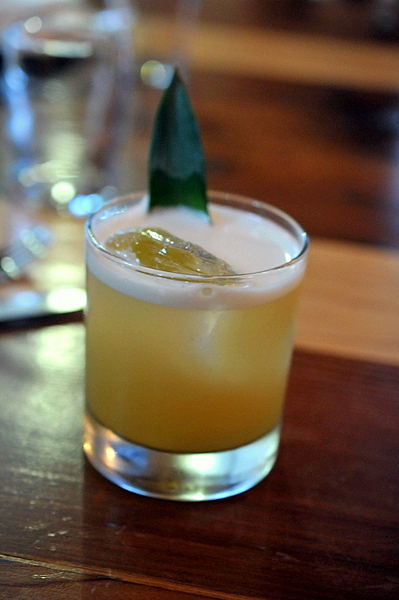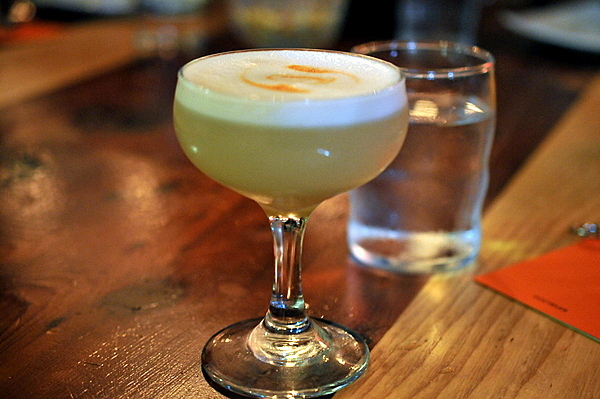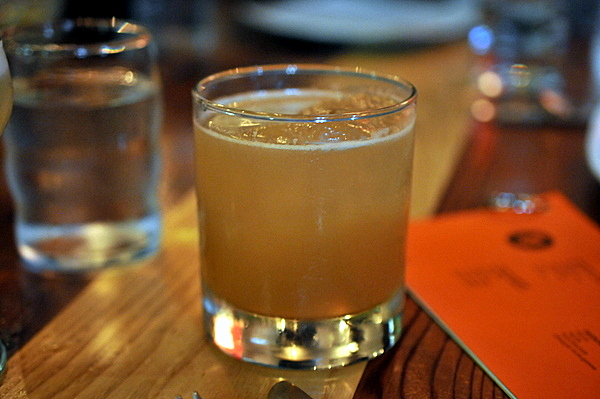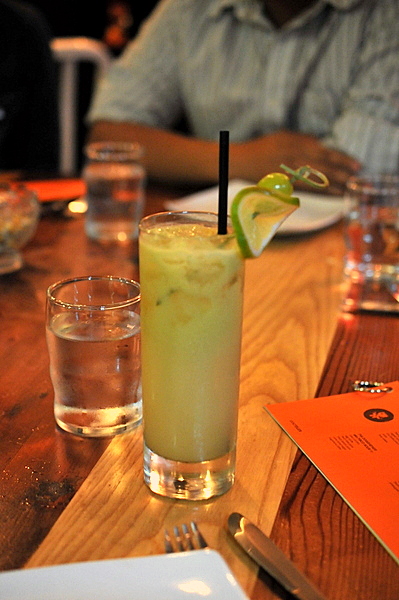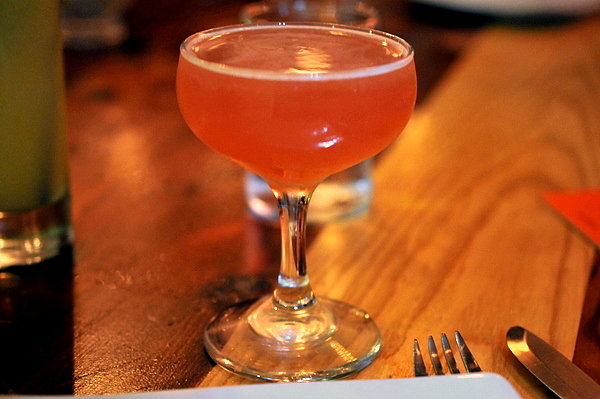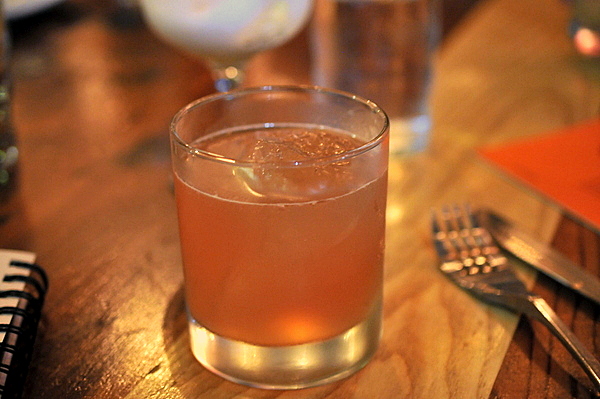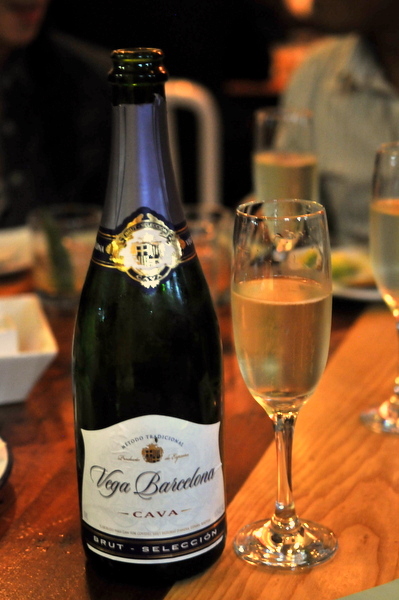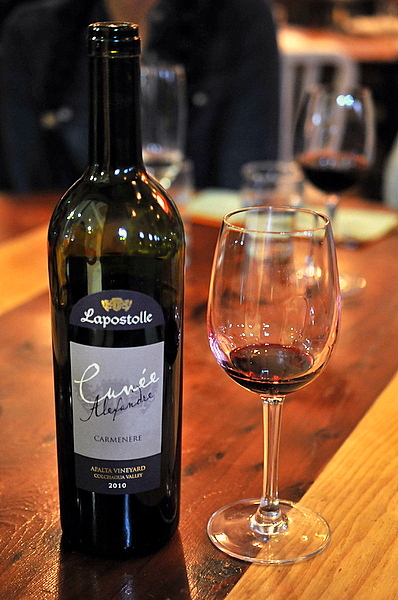Los Angeles, CA 90034
(310) 836-6252
Sushi is traditionally a man's game but nobody told Niki Nakayama that. The California native got her start at Takao in Brentwood before spending three years in Japan learning a variety of regional techniques, most notably the art of Kaiseki. After returning to California Niki opened Azami Sushi Cafe a popular sushi restaurant known for Niki's omakase and the roster of all female sushi chefs. I first met Niki Nakayama at her second venture Inaka, a comfortable but unassuming take out place by day that offered an intimate chefs table service by night, and was thoroughly impressed with the breadth of techniques and creativity of Niki's cooking. In 2011 Niki opened n/naka, a tasting menu only restaurant, where she she has elevated her cooking even further.
Given how much I adore her cooking, I was exceedingly pleased to hear she would be doing an all foie gras menu ahead of the ban. Naturally most of the foie gras meals that we've had have heavy French influences so Niki's Japanese based menu was a welcome change.
Sakizuke (A Pairing of Something Common and Something Unique) - Tamago Dofu, Unagi, Shaved & Seared Foie Gras, Balsamic Foie Gras Jus
Domaine Rossier 'Cuve Jean Philippe' Brut, Blanquette de Limoux, France
The meal kicked off with an egg tofu infused with foie gras. The pillowy tofu conveyed a weighty profundity and even smoky savor with an eggy sweetness on the finish. Accompanying the liver tinged puck was even more foie gras both shaved and seared; the former contributing a lush mouthfeel while and the later augmenting the tofu's inherent sapor. The accompanying wine was a French sparkler made with traditional Champagne grapes and using the traditional method, but the result was a bit more fruit driven and sweeter than the typical champagne.

Zensai (Main Seasonal Ingredient Presented as an Appetizer) - Hudson Valley Foie Gras Torchon, Bittersweet Chocolate,Roasted Unagi, Black Mission Figs, Brioche, Cabernet Reduction, Roasted Bing Cherries
Late Harvest Sauvignon Blanc/Semillon, Maldonado Family Vineyards, Napa Valley
A dish composed of highly seasonal ingredients is one of the core elements of any Kaiseki menu. Certainly the torchon of foie gras headlines the dish, but the other elements on the plate don't lack for flavor either from the fishy punch of the eel to the dynamic tang of the citrus gelee or the vivid bitterness of the greens. Every bite was different yet delicious, which is especially impressive considering the number of disparate elements on the plate. The torchon definitely needed the weight of the late harvest, despite its honeyed nose, a lively acidity on the midpalate keeps the wine from feeling too heavy while the finish of raisins paired well with the figs on the plate.

Modern Zukuri (Modern Interpretation of Sashimi) - Hokkaido Diver Scallop, Foie Gras Crumbles, Ponzu Reduction
Pinot Blanc, Domaine Pfister, Alsace, France
The thin fleshy slices of sweet Hokkaido diver scallop came topped with a ponzu reduction and foie gras crumbles as well as more traditional accompaniments of yuzu and daikon sprouts. An absolutely brilliant use of foie gras to add texture, the crumbles melt and coat the scallop in a slick oily sheen, but the vivacious savory twang of the ponzu effortlessly keeps the richness of the foie in check. Given the minimal role the foie plays on the flavor, a crisp lighter wine was definitely in order and the citrus levity of the Pfister fit the bill nicely.

Otsukuri (Traditional Sashimi) - Live Halibut, Chives, Ponzu, Foie Gras Jus
Shichida Junmai Ginjo, Tenzen Brewery, Saga, Japan
This was probably the most unconventional and creative utilization of foie in the entire meal. Starting with a traditional sashimi of live halibut from Korea, the thin slices of mild tender fish came topped with sprigs of chive and a dipping sauce of ponzu and foie gras jus. Once again, the ponzu provides most of the flavor, but the renderings of foie have an exquisite savor that makes the fish almost feel cooked. Our server described the Shichida as a "sexy" sake with delicate flavors of pear and anise I can definitely see where he is coming from.

Su-zakana (Palate Cleanser) - Kumamoto Oyster, Uni, Ponzu
The intermezzo consisting of a single Kumamoto oyster topped with uni in a bath of ponzu served as a break between the raw and cooked dishes. The aroma of brine here is absolutely stupefying, akin to being hit in the face by a splash of fresh seawater.

Mushimono (Steamed Dish) - Foie Gras, Black Abalone, Root Vegetable Dashi, Black Truffles, Scallion
Kerner Valle Isarco, Abbazia di Novacella, Alto Adige, Italy
There was a time when poached foie gras was my favorite preparation and this course reminded me why. The semi-liquid fatty liver is saturated with a root vegetable dashi that simultaneously moderated the offal's richness and infused the liver with a deep umami essence. The poached black abalone had a dense yet yielding consistency and subdued toothsome brine. Savings of black truffle perfume the broth with an earthy fragrance and the entire mix is finished with a zesty élan from a few judicious sprigs of fresh scallion.

Shiizakana (Not Bound by Tradition, The Chef's Choice Dish to be Paired with Wine) - Lobster and Hokkaido Scallop Ravioli, Sage Brown Butter Sauce, Chives
Greco de Tufo, Villa Matilde, Campania, Italy
The three ravioli came filled with a combination of snappy lobster and sweet diver scallop encapsulated in rendered foie gras. A gentle touch of brown butter and sage sauce exudes a heady warmth while minced chives and a touch of yuzu impart the perfect amount of levity on the pasta.

Niku (Meat Dish) - American Wagyu Rib Eye, Seared Foie Gras, Red Miso Paste, Magnolia Leaf
Pinot Noir, Au Bon Climat "La Bauge Au-dessus", Santa Maria Valley Ca
Without a doubt the heaviest course of the night, the last cooked dish consisted of an American Wagyu Rib Eye steak topped with foie gras in a sweet miso paste. The sugary attack of the miso is immediately apparent with the foie adding a creeping steely tang that slowly morphs into the rich beefy goodness of the Wagyu. I was a bit surprised at the decision to pair a pinot with Wagyu but the leather and smoke in the wine worked wonders with the meat.

Sunomono (Vinegared Salad) - Wild Aji, Cucumber, Miyoga, Shiso, Yuzu Omoi
Signifying the transition to sushi, our second palate cleanser consisted of wild Aji with miyoga, shiso, and ponzu. Though the oily character of the fish was a touch lost, the potent acidic savor of the ponzu and fragrance of the shiso certainly did their job. The sweet burn of the Yuzu Omoi left me smacking my lips and wishing for more.

Shokuji One (Rice Dish - Sushi) - Madai
Shichida Yamahai Karakuchi Jumai, Tenzen Brewery, Saga, Japan
Our first nigiri was a piece of tender fleshy Madai. Niki adds a deft touch of lemon and salt, giving the fish a much needed scintilla of flavor without completely overwhelming it. I've always heard sake with sushi puts too much emphasis on the rice, but our server explained something like the Yamahai Karakuchi, an aged sake with a dryer flavor profile, can still work.

Shokuji One (Rice Dish - Sushi) - Toro
Shichida Yamahai Karakuchi Jumai, Tenzen Brewery, Saga, Japan
The toro was probably my favorite piece of the night; utterly tender and decadent, the essence of fat and oil linger on the palate long after the fish is gone.

Shokuji One (Rice Dish - Sushi) - Shima Aji
Shichida Yamahai Karakuchi Jumai, Tenzen Brewery, Saga, Japan
I'm always happy to see Shima Aji at more restaurants. The supple fish has a lavish richness that is enhanced rather than masked by Niki's sparing use of yuzu kosho.

Shokuji One (Rice Dish - Sushi) - Amaebi
Shichida Yamahai Karakuchi Jumai, Tenzen Brewery, Saga, Japan
The shrimp was also excellent, with a satisfying succulent snap and surprising tingle of spice. I could have done with a bigger piece though.

Shokuji One (Rice Dish - Sushi) - Aoyagi
Shichida Yamahai Karakuchi Jumai, Tenzen Brewery, Saga, Japan
This textbook Surf Clam exhibited a wet vigorous snap coupled with a wonderful salty tang that gave way to a bit of sweetness on the finish.

Shokuji One (Rice Dish - Sushi) - Foie Gras
Shichida Yamahai Karakuchi Jumai, Tenzen Brewery, Saga, Japan
Naturally a Japanese foie gras dinner wouldn't be complete with out foie gras nigiri. Personally, I think a few of the fishes could have used a touch of shaved foie, but its hard to argue with the decision to finish the meal with the simple yet direct combination of foie on rice.

Shokuji Two (Rice Dish) - Soba with Foie Gras Dashi Broth
After the nigiri we were presented with a bowl of soba with dashi broth, a very traditional preparation but for the infusion of foie gras. The liver is subtle here and if not for the oily sheen and overarching savor, this would have been a textbook preparation of soba.

Intermezzo: Lemon Sorbet - with Lemon Zest
Our first dessert consisted of a bracing shot of lemon sorbet with a bit of zest. Nothing subtle here, just the refreshing chill and vigorous acidity of fresh citrus.

Mizumono (seasonal dessert) - Flourless White Chocolate and Green Tea Cake, Red Azuki Bean Ice Cream
Muscat de Beaumes de Venise, Delas, Rhone Valley, France
For our final course, Niki draws upon two staples of Asian desserts, green tea and read bean, to make a flourless cake and ice cream respectively. The duet pair seamlessly, a sweet and graceful flourish to end a spectacular meal.

Simply put, this was the best foie gras dinner yet, though given Niki's track record her success comes as no surprise. Niki brings her characteristic blend of finesse and creativity; effectively using the foie as an accent as often as it was the star of the dish. I was also quite impressed with the wines our somellier selected, its a rarity to see such thoughtful and diverse pairings with Japanese cuisine. As an aside, I was surprised how difficult it was to secure reservations though I suppose a positive review from Jonathan Gold tends to do that. At this point it is likely impossible to get a reservation at n/naka before the foie gras ban takes effect, that being said, the regular menus are equally impressive and certainly well worth a try.
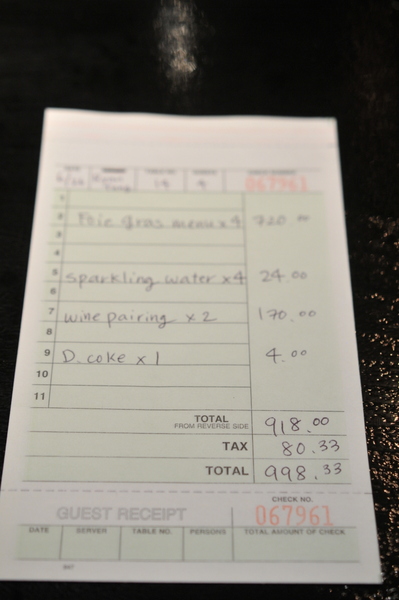
Read more.
